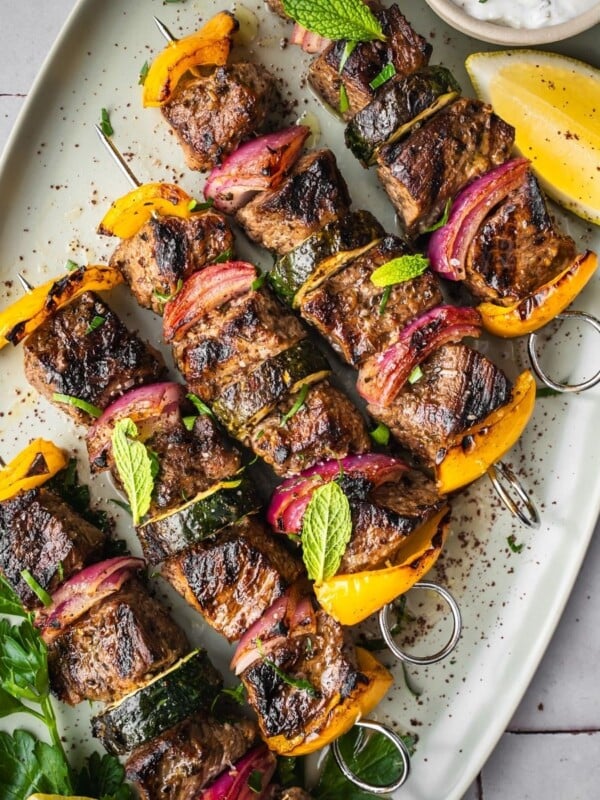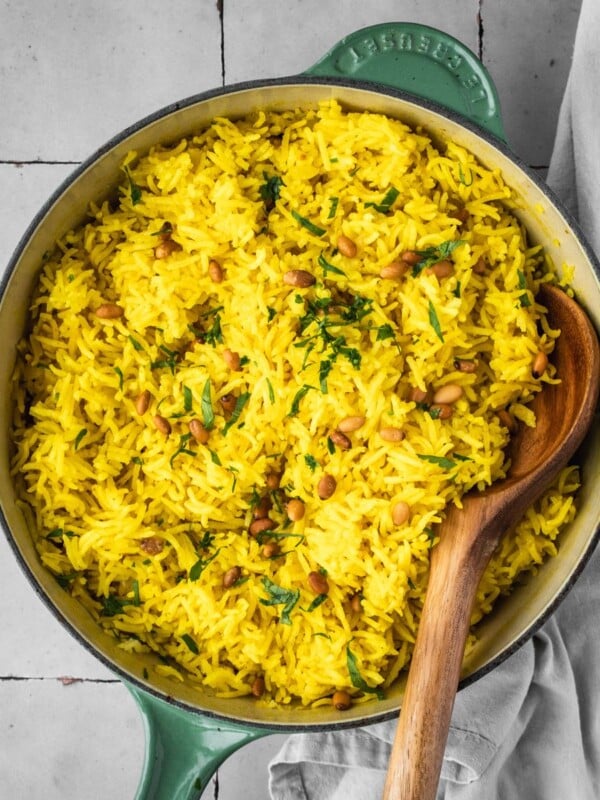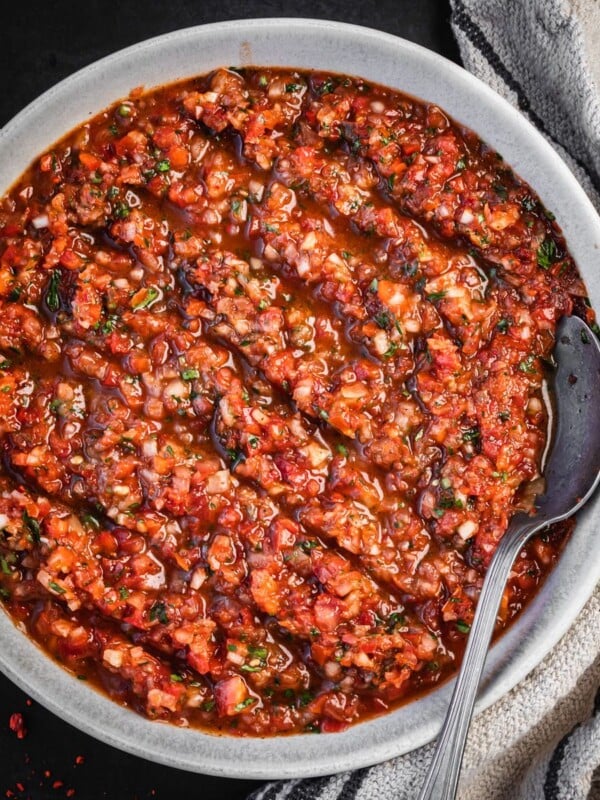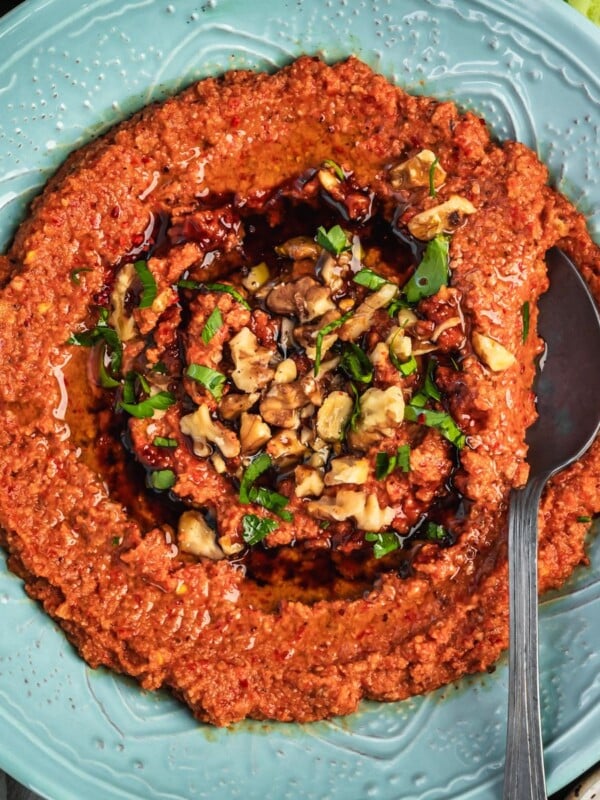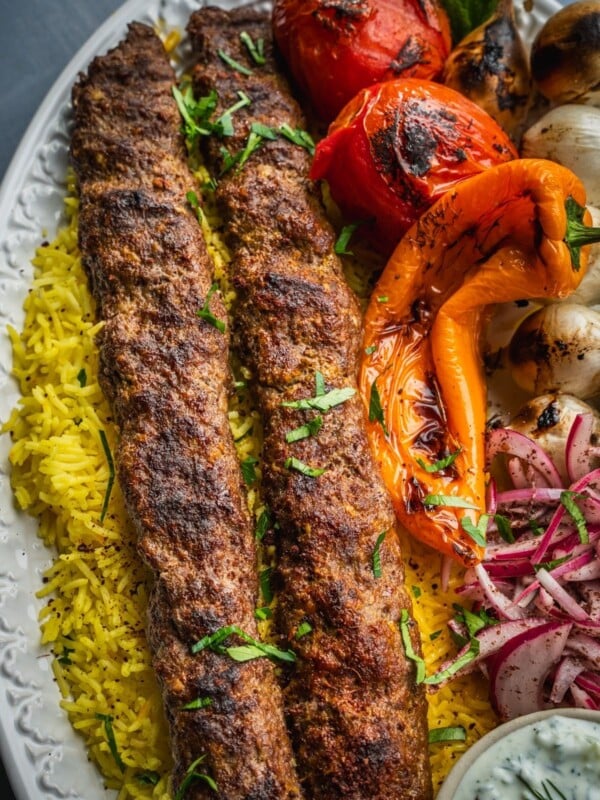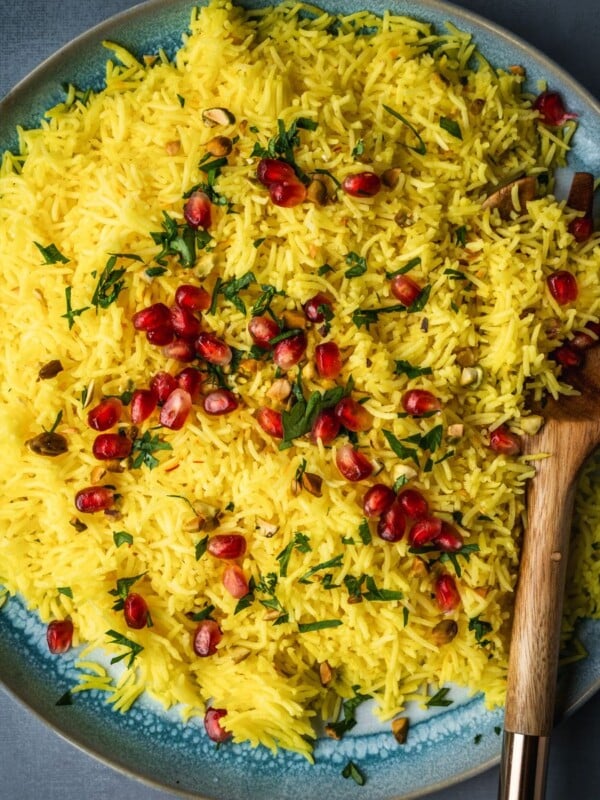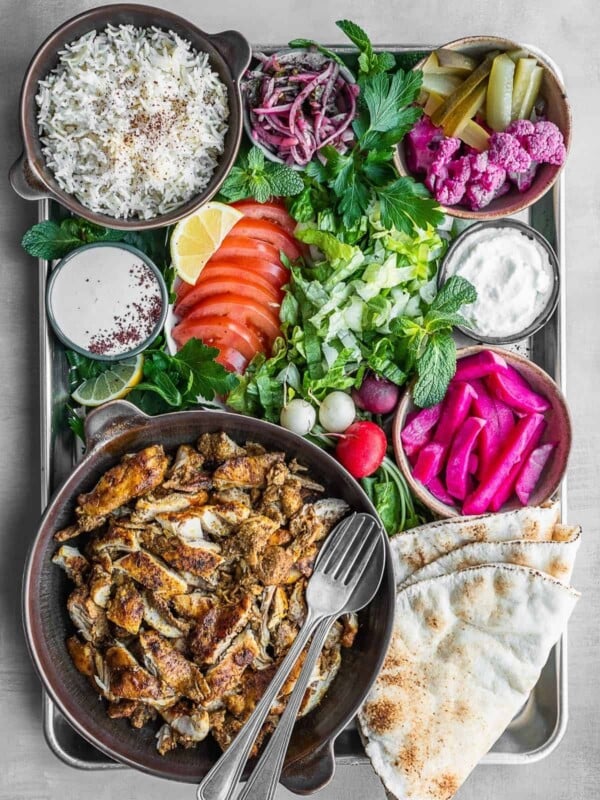Levantine cuisine is a fusion of culinary traditions that have developed over the course of millennia in the Levant region of the Middle East. This region is known as “Bilad al-Sham”. The term “Bilad al-Sham” translates to “the land to the left hand” in Arabic, reflecting its location in relation to the Arabian Peninsula. Today, this cuisine is reflected in modern-day Lebanese, Syrian, Jordanian and Palestinian recipes, traditions and food culture.
The cuisine has been shaped by various cultures and civilizations, including the Phoenicians, Greeks, Romans, Ottomans, and Arabs. A broader definition of the region may also include Egypt, Turkey, Cyprus and Greece.

Table of Contents
The cuisine of the Levant is known for its fresh and vibrant flavors, its use of aromatic spices, and its emphasis on locally sourced ingredients, and fresh vegetables. This post explores the history and culture of Levantine cuisine, examines its classic ingredients and signature dishes, and discuss the challenges that the cuisine faces in the modern world.
History and Culture of Levantine Cuisine
The Levant region has a rich culinary history that spans thousands of years. The earliest recorded evidence of food in the region dates back to the Bronze Age, with archaeological discoveries revealing evidence of crops such as wheat, barley, lentils, and chickpeas. Over the centuries, the cuisine of the Levant has been shaped by a variety of cultures and civilizations, each leaving its own unique mark on the cuisine.
One of the most significant influences on Levantine cuisine was the Phoenician civilization, which flourished in the region from around 1500 BCE until 300 BCE. The Phoenicians were known for their seafaring abilities, and they established a vast network of trade routes that allowed them to import and export a wide range of ingredients. They introduced the cultivation of citrus fruits, olives, and grapes to the region, all of which remain staples of Levantine cuisine to this day.
The Roman Empire also had a significant impact on Levantine cuisine. The ancient Romans conquered the region in the first century BCE and brought with them new cooking techniques and ingredients, such as olive oil, wine, and garlic. The Byzantine Empire, which followed the Romans, continued to influence Levantine cuisine with its emphasis on vegetarianism and the use of herbs and spices.
The Islamic Golden Age (7th to the 13th century CE) saw the development of Arab cuisine, which had a deep influence on Levantine cuisine. Arab cuisine is known for its use of fragrant spices, such as cumin, cinnamon, and coriander, as well as its emphasis on sweet and sour flavors. This influence can be seen in dishes such as muhammara, a dip made from roasted red peppers, walnuts, and pomegranate molasses, and Lebanese fattoush, a salad made with sumac and pomegranate molasses.
Levantine cuisine was also heavily influenced by the Ottoman Empire, which ruled the region from the 16th to the early 20th century. Ottoman cuisine was characterized by its use of meat, dairy products, and grains, and it introduced new cooking techniques, such as grilling and baking. The Ottoman influence can be seen in dishes such as kebabs (for example, Authentic Shish Tawook), which are traditionally grilled.
Levantine vs Arab
The concept of the Arab world as a modern construct is primarily based on language rather than culture. The term “Arab” originally referred to a nomadic ethnic group that inhabited the Arabian Peninsula and spoke the Arabic language. However, over time, the Arabic language and its associated culture spread beyond the Arabian Peninsula, largely due to the Islamic conquests of the 7th and 8th centuries.
Today, the Arab world (Arab Nations) refers to a group of Middle Eastern countries and territories that share a common language, Arabic, as their official language or one of their official languages. These countries have diverse cultural traditions, histories, religions, and practices. However, their common linguistic heritage provides a unifying factor that helps to define the Arab world as a distinct entity.
It is worth noting that the idea of a unified Arab world is a relatively recent concept, dating back to the early 20th century. The Arab nationalist movement, which emerged in the late 19th century and gained momentum after World War I, sought to promote a pan-Arab identity and unite the Arab people under a single political entity. The movement was driven in part by a desire to resist European colonialism and assert Arab independence and sovereignty.
This is a double-edged sward as in one way, it unifies a people with a common language and belief system but melds them together into a singular “melting pot” that doesn’t take into consideration individual contributions, intersectionality, culture and, of course, cuisine.
Levantine vs Arab Cuisine
Many younger generation chefs, cooks, bloggers and food enthusiasts are trying to uncouple (or undo) the lumping together of foods and culture from that region because there is truly no such thing as Arab food or Arab cuisine.
When I think of Arabian food, I think of the Arabian Peninsula which includes modern-day Bahrain, Kuwait, Oman, Qatar, Saudi Arabia, the United Arab Emirates (UAE) and Yemen. Traditional cuisine from these countries differs from Levantine cuisine because of climate, agricultural conditions and trade.
Dishes from the Gulf region are heavily influenced by spices like cardamom and cumin, which one can assume were brought over by spice route traders from South Asia.

Bread is also an important staple in both cuisines, but the type of bread differs. In Arab cuisine, pita bread is a staple, while in Levantine cuisine, flatbread or taboon bread is more commonly used. Though in modern times, many of these distinctions have disappeared.
At the end of the day, both cuisines share many similarities due to geographical and cultural overlaps. However, there are some notable differences in the ingredients, flavors, and cooking techniques that distinguish Levantine cuisine from Arab cuisine.
The Fertile Crescent
The Levant is also part of the Fertile Crescent, a historical region located in the Middle East, stretching from the eastern Mediterranean coast through Mesopotamia to the Persian Gulf. It is called the Fertile Crescent because of its rich soil and favorable climate, which allowed for the development of agriculture and the growth of ancient civilizations.
The region includes the modern-day countries of Iraq, Syria, Lebanon, Jordan, Israel, and Palestine. It is also known as the Cradle of Civilization, as it is where some of the earliest human civilizations arose, including the Sumerians, Babylonians, Assyrians, and Persians.
The Fertile Crescent played a significant role in the development of human society, as it was a center of trade, culture, and innovation. It was home to the invention of writing, the first laws, and the first forms of government.

Classic Levantine Ingredients
The traditional cuisine of the Levant is characterized by its use of fresh and locally sourced ingredients, as well as its reliance on aromatic spices and herbs. A flavour journey that includes a wide range of ingredients such as:
- Chickpeas: Chickpeas (Garbanzo Beans) and other protein-rich legumes are a staple ingredient in Levantine cuisine, and are used to make dishes such as hummus, falafel and fattet hummus.
- Eggplants: Eggplants are used in a variety of dishes in Levantine cuisine, including mutabal, baba ganoush (or baba ghanoush) and maqluba.
- Tomatoes: Tomatoes are a key ingredient in many Levantine dishes, such as Lebanese Fattoush and galayet bandora.
- Onions: Onions are used in a wide range of Levantine dishes, both raw and cooked, and are often caramelized for added depth of flavor. They are also often sliced thin and mixed with sumac and used as topping for kofta and kebab.
- Parsley: The heavy use of parsley is common in Levantine cuisine, adding a fresh and herbaceous note to salads like Lebanese tabbouleh (Lebanon’s most popular salad).
- Mint: Mint is another popular herb used in Levantine cuisine, adding a cooling and refreshing note to dishes like Fattoush. Mint is also used as a garnish and finishing herb to many main dishes.
- Sumac: Sumac is a tangy and slightly sour spice that is used in many Levantine dishes, including Musakhan, fattoush, caramelized eggplant hummus, and kebabs.


- Za’atar: Za’atar is a blend of dried herbs that typically includes thyme, oregano, and sesame seeds, and is used as a seasoning for meats, breads, and dips. Za’atar also refers to the herb, Origanum Syriacum (or Syrian Oregano). Za’atar is quintessential to Palestinian history and identity. It can be used as a garnish, like in Labenh Balls (Shanklish) or as the star of the show, like in Za’atar Chicken Thighs.
- Pomegranate molasses: Pomegranate molasses is a thick and tangy syrup made from pomegranate juice that is used in many Levantine dishes for its sour and fruity flavor. It can be used in salad dressings too.
- Bulgur: Bulgur is a cracked wheat that is used in a variety of dishes, including tabbouleh and kibbeh.
- Grape Leaves: Used in the preparation of dolma (stuffed grape leaves) and also used in the preparation of brined olives.
- Tahini: A paste made by crushing sesame seeds into a smooth and oily condiment, used in dressings and to flavor the ubiquitous Hummus and other dishes like Musabaha.
- Maftoul: A Palestinian Pearl couscous that is still sometimes made by hand, a key component of its namesake dish, Maftoul. Similar to Lebanese Moghrabieh.
Sample Dishes of Levantine Cuisine
Levantine cuisine is known for its vibrant flavors and fresh ingredients, and there are many dishes that exemplify the cuisine’s unique characteristics. Though there is a heavy influence of vegetables (many of the recipes are inherently vegetarian and/or vegan), fresh fruit, meat dishes (lamb, chicken, beef), seafood (sea bass, sardines) and dairy are also present on the Levantine table.


Some of the most popular dishes include:
- Hummus: Classic homemade Hummus is a dip made from chickpeas, tahini, lemon juice, and garlic. It is a staple of Levantine cuisine and is often served with pita bread and vegetables. Try its breakast cousin, Musabaha.
- Fattoush: Authentic Fattoush is a salad made with tomatoes, cucumbers, onions, and herbs, such as parsley and mint. It is typically dressed with a mixture of olive oil, lemon juice, and sumac.
- Kibbeh: Kibbeh is a dish made from bulgur wheat and ground meat that is typically fried or baked. It can be served as a main course or as an appetizer.
- Tabouli: Also spelled Tabbouleh, is a salad made from bulgur wheat, tomatoes, parsley, mint, and onions. It is typically dressed with a mixture of olive oil and lemon juice.
- Ful medames: A popular breakfast dish made with fava beans (and sometimes chickpeas) stewed lightly with tomatoes, parsley and olive oil.
- Knafeh (Kunafe): An incredibly indulgent dessert made with cheese (or cream) and shredded phyllo dough, drenched in syrup. The origin of this dessert is disputed (some consider it of Ottoman origin). However, the version created and popularized in Nablus, Palestine is a standout and world renowned.
- Kofta: Spiced ground meat takes several forms and is cooked in different ways, like in my Chicken Kafta and Beef Kofta. Kofta meat is also used to stuff inside pita, as shown in my Arays recipe.
- Shawarma: Classic street food popular around the world. Try my Lebanese Chicken Shawarma recipe and make your own Shawarma Spice Blend.
A Few Recipes from the Blog:
Main Dishes
Levantine Recipes
Levantine Recipes
Appetizers
Baking
Baking
Condiments
Levantine Recipes
Challenges and Future Outlook
Despite the popularity of this cuisine in the West, it faces several challenges in its own home. One of the biggest challenges is the ongoing political instability in the region, which has led to a disruption in the food supply chain and a decline in agricultural production. This has made it difficult for people in the region to access fresh and locally sourced ingredients and has led to an increased reliance on imported foods.
Aleppo Pepper
The Syrian conflict, which began in 2011, has had a significant impact on the production of Aleppo pepper, a key ingredient in Levantine cuisine. Aleppo pepper is a variety of chili pepper that is grown in the Syrian city of Aleppo and is known for its distinctive flavor and mild heat.
The conflict led to a disruption in the production and distribution of Aleppo pepper, as many farmers have been displaced or forced to abandon their crops due to the violence. In addition, the destruction of infrastructure and transportation networks has made it difficult to export Aleppo pepper to other countries.
As a result of these challenges, and the added demand for this gourmet pepper, the price per kilo has risen dramatically, making it more difficult for chefs and home cooks to access. Some have turned to substitutes, such as Turkish Biber pepper or Lebanese pepper, but these varieties lack the unique flavor and aroma of true Aleppo pepper.
Despite these challenges, efforts are being made to support the production of Aleppo pepper and preserve the culinary heritage of the region. Organizations such as the Slow Food Foundation for Biodiversity have launched initiatives to support small-scale farmers in Syria and promote the use of Aleppo pepper in international cuisine.
I personally grow Aleppo peppers in my home garden not only for their amazing flavor, but to do my part in preserving the history and heritage of this important variety. I save seeds each year to share with like-minded individuals.


Restrictions and Land Appropriation
The occupation of Palestine has had a significant impact on Palestinian farmers, who have faced a range of challenges that have affected their ability to grow crops and earn a livelihood. Israeli policies and actions have directly impacted Palestinian farmers in several ways.
One of the main issues facing Palestinian farmers is access to land. The Israeli government has appropriated large amounts of Palestinian land for the construction of settlements, which are illegal under international law. This has reduced the amount of land available for Palestinian farmers and has made it more difficult for them to cultivate crops.

In addition, Palestinian farmers face restrictions on their movement and access to markets. Israeli checkpoints and roadblocks make it difficult for farmers to transport their crops, leading to delays and loss of income. Furthermore, the construction of the separation wall, which separates Palestinian villages from their farmland, has made it almost impossible for farmers to access their fields.
Another issue is the destruction of Palestinian crops and infrastructure by Israeli military forces. Israeli troops have uprooted thousands of Palestinian olive trees, a key source of income for many farmers, and have destroyed irrigation systems and other agricultural infrastructure. These actions have caused significant economic damage to Palestinian farmers and have disrupted their ability to produce crops.
Finally, Israeli policies have also impacted the quality and quantity of water available to Palestinian farmers. The Israeli government controls the majority of water resources in the region and has restricted Palestinian access to water, leading to shortages and reduced crop yields.
These challenges facing Palestinian farmers have led to a decline in agricultural production and have made it more difficult for farmers to earn a livelihood. The impact of these policies is felt not only by farmers themselves but also by the wider Palestinian community, who rely on local agriculture for food and economic stability.

Access to the Sea
For Palestinians living in Gaza, access is even further restricted by the Israeli blockade which restricts and controls what goes in and out. Seafood was historically a big part of the diet of Eastern Mediterranean Palestinians.
The blockade and restrictions have affected Gazan fishermen’s ability to fish in waters that they historically had access to. Over the years, access to the water was reduced from 20 nautical miles as outlined in the Oslo Accords down to a few mere nautical miles, rendering it nearly impossible for fishermen to make a living wage, to feed their families and communities.
Cultural Appropriation
Like any other form of cultural appropriation, this involves the borrowing of culinary practices, traditions, and cuisines by individuals or groups from outside the Levantine region, often without proper acknowledgment or respect for the originators.
One of the main concerns regarding the appropriation of Levantine food is the erasure of the history and cultural significance of the cuisine. Levantine cuisine is deeply tied to the region’s social and political history, religious practices, and culinary traditions. When this history is not acknowledged or respected, it can lead to the erasure of the cultural significance of the traditional dishes.
Another issue is the commodification of Levantine food. In recent years, Levantine cuisine has become increasingly popular in many Western countries, with many restaurants and chefs offering their interpretation of Levantine dishes. While this can help to raise awareness of Levantine cuisine and make it more accessible to a wider audience, it can also lead to the exploitation of the cuisine for profit, without proper acknowledgment.
There is also a concern that the appropriation of Levantine food can lead to the distortion and misrepresentation of the cuisine. When non-Levantine chefs or food writers reinterpret Levantine dishes without proper knowledge or understanding of the culture and culinary traditions, it can lead to the misrepresentation of the cuisine and the erasure of its unique flavors and techniques.
Case in Point: Chocolate and Avocado Hummus
This can lead to non-traditional or original recipes that are deemed “traditional” by their creators. One only needs to do a simple google search for hummus to find a plethora of recipes like avocado hummus or chocolate hummus. This issue is further amplified when businesses and food producers create these recipes for the mass market, to be sold in every grocery store possible.
Power Dynamics at Play
Moreover, there is a power dynamic involved in the appropriation of Levantine food. When non-Levantine individuals or groups take on Levantine cuisine, they are often in a position of privilege and power, while the originators of the cuisine may be marginalized or oppressed. This dynamic can contribute to the erasure of the cultural significance of Levantine food and can perpetuate inequalities.
To address the issue of cultural appropriation of Levantine food, it is important for individuals and businesses outside the region to acknowledge and respect the cultural significance and history of the cuisine. This can involve working with Levantine chefs and food writers to learn about the culinary traditions and to properly credit and acknowledge the originators of the cuisine.
Additionally, it is important to avoid commodifying or exploiting the cuisine for profit, and to use one’s platform or influence to amplify the voices and perspectives of Levantine communities.
The fast road to fast food
Another challenge facing Levantine cuisine is the trend toward fast food and convenience foods, which has led to a decline in traditional cooking techniques and a loss of culinary knowledge. This has resulted in a homogenization of cuisine across the region, with fast food and processed foods becoming increasingly popular.
This is why we must work hard to preserve and share the recipes of our mothers, fathers, and grandparents.
In Summary
Levantine cuisine is a rich and diverse culinary tradition that reflects the region’s long and complex history. It has been influenced by a variety of cultures and civilizations, and is known for its fresh and vibrant flavors and emphasis on using seasonal, locally sourced ingredients. Despite the challenges facing the region, including political instability and a changing food landscape, Levantine cuisine continues to be popular around the world.
FAQs
Levantine cuisine is a fusion of culinary traditions that has developed over the course of millennia in the Levant region of the Middle East. The region primarily encompasses modern-day Syria, Lebanon, Jordan, Palestine and Israel, and has been shaped by various cultures and civilizations, including the Phoenicians, Greeks, Romans, Ottomans, and Arabs.
Tabbouleh (parsley and bulgur salad), Labneh, Musakhan (chicken with sumac and onions), Za’atar Chicken, Maqluba, Shish Barak, Taboon.
Both cuisines share many similarities due to geographical and cultural overlaps. However, there are some notable differences in the ingredients, flavors, and cooking techniques that distinguish Levantine cuisine from Arab cuisine.
